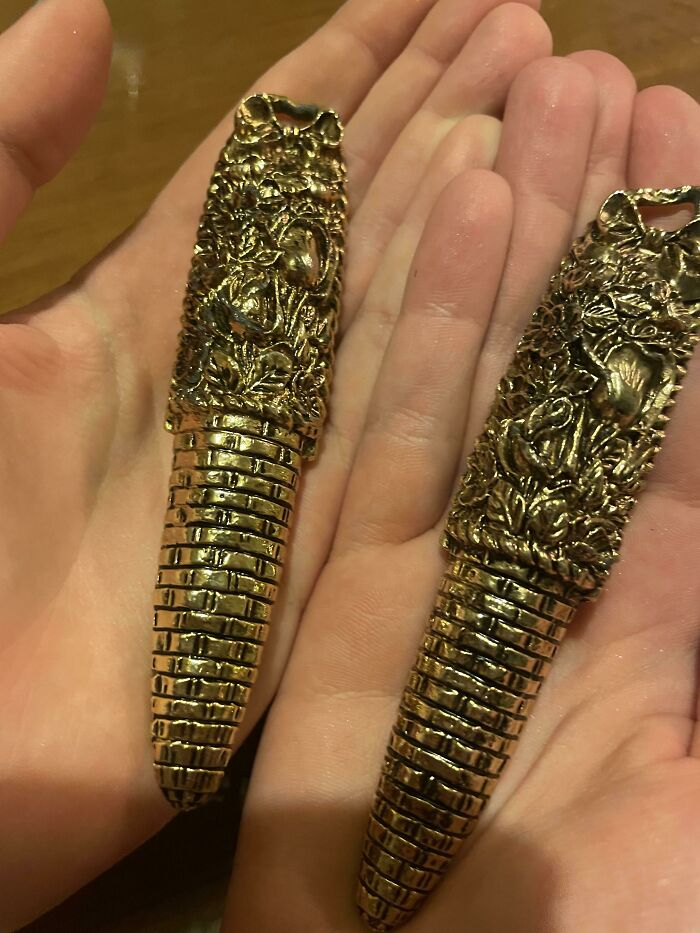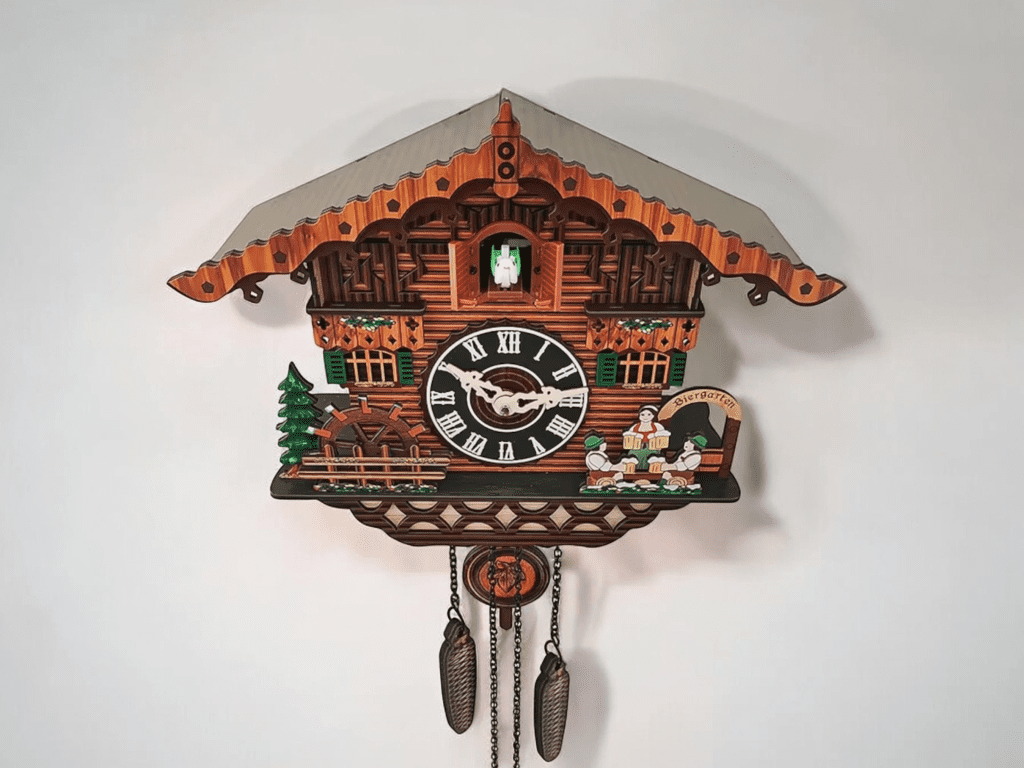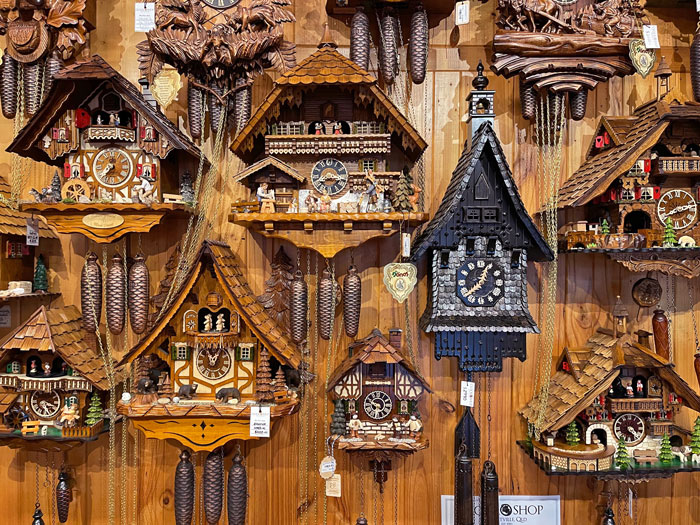Stumbling upon unusual items at a thrift shop can be exciting, especially when you’re unsure what you’ve found. If you’ve discovered two dense, ornate metal objects like the ones pictured above, you might wonder what purpose they serve. At first glance, they may seem decorative, but these intriguing objects are actually vital components of a very traditional and nostalgic timepiece—the mechanical cuckoo clock.
The Purpose of These Ornate Metal Weights

These dense metal objects are, in fact, weights used to power a mechanical cuckoo clock. These clocks, originating from Germany’s Black Forest region, are famous for their intricate designs and the charming “cuckoo” sound that announces each hour. What you may not realize is that these clocks rely on more than just clockwork mechanisms—they are powered by gravity, thanks to the weights you’ve found.
How the Weights Power the Clock Mechanism
A mechanical cuckoo clock functions in a unique way that sets it apart from other clocks. The dense weights, often shaped like pine cones or with intricate designs, are suspended by chains from the clock’s mechanism. The clock operates through a simple but brilliant design: as the weights slowly drop, gravity pulls the chains down, turning gears that keep time.
Each clock typically has two weights. One weight is responsible for powering the clock’s timekeeping function, ensuring that the hands move and the clock accurately tracks hours and minutes. The other weight powers the cuckoo mechanism, the feature that makes these clocks so beloved. When the clock strikes the hour, the weight turns the gears, and a small wooden bird or similar figure emerges to signal the time with a “cuckoo” sound.
How to Wind a Mechanical Cuckoo Clock
Just like any clock, a cuckoo clock needs to be wound regularly. The winding process is simple: you pull the other end of the chain to bring the weight back up to its starting position. As the weight moves up, the chain shortens, ensuring that the clock has enough power to keep running for several hours or days, depending on the design. The same process applies to the chain connected to the cuckoo mechanism, keeping both the time and the iconic sound running smoothly.
Why Are These Weights So Heavy?
The dense metal used for these weights serves a practical purpose—gravity. The heavier the weight, the more force it exerts on the chain, which allows it to turn the clock’s gears consistently. The design of the weights is often aesthetically pleasing, with intricate carvings or a naturalistic pinecone shape, adding a decorative touch that complements the clock’s overall design. Their weight ensures a steady, regulated descent, essential for keeping time accurately.
A Historical Nod to Traditional Timekeeping
Cuckoo clocks have a long history, dating back to the 18th century when they were first made in the Black Forest of Germany. These clocks became popular for their detailed craftsmanship and unique design, with many handmade pieces becoming collectors’ items over the years. The metal weights are an essential part of this traditional design and have remained largely unchanged throughout the centuries.
Their function may seem mechanical, but their charm lies in the fact that these weights bring the whole clock to life—keeping time ticking and allowing the whimsical cuckoo bird to appear each hour. For those who cherish vintage craftsmanship and traditional timepieces, discovering these weights is akin to holding a piece of history.
Different Designs and Varieties

Though the most common weights you’ll find on cuckoo clocks are shaped like pinecones, other designs exist depending on the clockmaker’s artistic vision. Some weights, like the ones you discovered, may feature ornate floral or nature-themed carvings, adding to the visual appeal. These designs often reflect the cultural heritage and the craftsmanship of the region where the clock was made, particularly in Germany, where artisanship is a point of pride.
Can These Weights Be Used for Other Clocks?
While these dense metal weights are designed specifically for cuckoo clocks, their function could theoretically be applied to other types of gravity-powered timepieces. However, due to their unique weight and balance, they work best when paired with a cuckoo clock mechanism, ensuring the precision needed for accurate timekeeping.
If you’ve found these weights and don’t own a cuckoo clock, consider keeping them as a collectible or a decorative item that represents a beautiful piece of timekeeping history. Alternatively, if you’ve always wanted a cuckoo clock, your discovery might just be the motivation to find one!

Where to Find More Parts or Clocks
If you’re looking to restore or purchase a cuckoo clock, you can often find clocks and parts at antique shops, specialty clock retailers, or even online marketplaces. Many clock enthusiasts love to repair or refurbish vintage clocks, bringing them back to life with their original parts. The weights you found could be part of this journey, either as replacements for missing parts or as decorative pieces.
Conclusion: The Heart of a Cuckoo Clock
In conclusion, the dense metal objects you found are not just curious artifacts—they are an essential component of a mechanical cuckoo clock. They help keep time ticking away and power the charming cuckoo mechanism that has delighted people for centuries. By harnessing the force of gravity, these weights make sure that the clock runs smoothly and efficiently, preserving a piece of traditional craftsmanship in an age of digital timekeeping.
Whether you’re a collector of vintage items, a lover of traditional crafts, or simply someone who enjoys the beauty of old-world mechanics, these weights represent something more than just a functional part of a clock. They symbolize a timeless connection to history, culture, and the art of timekeeping.


